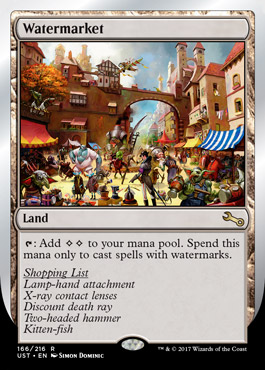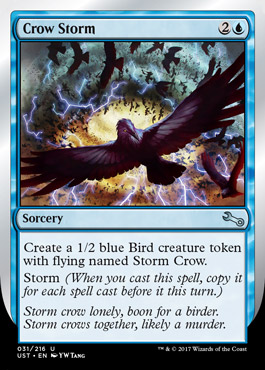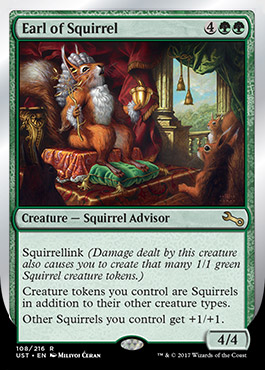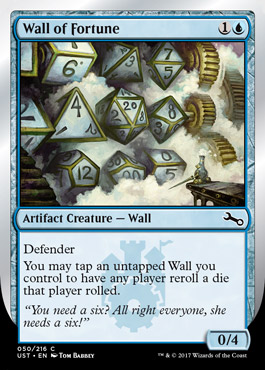Magic: the Gathering is a truly unique game. It combines elements of a lot of popular and eternal games. Chess and poker are popular comparisons; and while Magic is quite different in fundamental ways from both of those games, it definitely has some deep similarities with each. World of Warcraft is another one that comes to mind—while Magic predates MMORPGs, I believe Magic contributed to the development of the genre.
At its core, Magic is an analog version of the massively multiplayer genre, where you explore a giant multiverse however you want, with the cards providing the language to communicate with other players. Any Magic player in the world can sit down and play with another. Digital technology has enabled game designers to realize imagined worlds, but Magic is such a unique and celebrated game because it does this without incorporating digital technology into the game. You still have to grapple with technology to be able to play anyone around the world—fly to tournaments or brave the awkward world of Magic: the Gathering Online—but you can play Magic with your friends completely off the grid, or during a power outage or blackout.
My favorite aspect of Magic is an integral part of all this: the game runs on an intuitive rules engine. The game has tons of official rules, a Rules Manager, and an entire community of judges working to interpret and polish them. But fundamentally, the game works through the intuitive understanding of the players. Players can generally figure out how cards work, and the rules team have gotten pretty good at making the official explanations line up with intuition.
But there are some things the official rules don’t really allow players to do in a way that can be refined and codified for competitive play. You have to draw boundaries somewhere. Thus the official Magic rules don’t recognize watermarks, and timing restrictions cut out improvisational looseness from the gameplay. Of course, some players want to explore that terrain anyway, and there’s nothing stopping them from doing it on their own. A few times, however, Wizards of the Coast has produced a silver-bordered set of cards that don’t work in the official rules but work fine as house rules.
I never cared about Unglued or Unhinged, the previous two silver-bordered booster sets. I don’t know if I will play the Unstable either, but the previews this week have caught my eye. Un-sets are all about doing things that don’t quite work under official Magic rules. Zach Barash has explored how previously silver-bordered cards eventually came to work under Magic rules. Today I’d like to do the opposite: explore some previewed cards from Unstable that feel pretty close to actual tournament cards.

Oh look, Eldrazi Temple for a “card type” that is somewhat random. Watermarks appear in some black-bordered sets to highlight faction or guild affiliations. They don’t mean anything—except they sometimes do, in that cards with the Phyrexian watermark from Scars of Mirrodin block meet specific criteria and Izzet cards all kinda do the same thing. But then there are promotional versions that have fancy watermarks on cards that don’t have them naturally. Goblin Rabblemaster was the buy-a-box promo for M15, for example. That’s a good card to cast with Watermarket.
Eldrazi Temple is a stupid card that might get banned in Modern. Imagine if instead it made two mana for a random list of cards. Thankfully it’s not practical to give watermarks official rules significance.

How do you break Storm Crow? Reverse the name!
But why exactly couldn’t Crow Storm get printed with a black border? Crow Storm is basically a variation on Empty the Warrens, which is legal and pretty good in Modern right now. “Because they can’t print any new storm cards” is probably the reason, but that’s not a real answer the way it is for Ante cards. Are silver-bordered sets the new home for failed mechanics? Can we expect a un-reprint of Adventurers’ Guildhouse next?
Is there some other reason besides the brokenness of the storm mechanic? The rules allow cards to create tokens that have the same name as another—Progenitor Mimic and The Scarab God come to mind. Those require actual copies of the named card to exist in the game first—is it against the rules to make token Storm Crows out of nowhere? Maybe “Crow Storm” isn’t distinguishable from “Storm Crow” by some commutative property of card names. Are there two Magic cards that use the same words in their names, but in different order? Does Ball Lightning preclude a Lightning Ball?

Squirrellink is the best-named mechanic since wizardcycling. We know that squirrels have been a controversial and mostly-unsupported creature type. Perhaps that alone makes Earl of Squirrel unprintable in black border, but Deranged Hermit will never understand what’s going on with that.
But I’m not sure squirrellink would work in black border. The difference between lifelink and the card Spirit Link is the timing. The original mechanic was triggered, which meant the creature dealt damage before you gained life. The rules were able to absorb lifelink into the resolution of combat damage itself, which makes sense because you’re just adjusting life totals. Can you make tokens as combat damage resolves? Intuitively it could be, but I suspect the official rules would not accommodate that so easily.

And then there’s Wall of Fortune, which has a good chance of ending up in my top five favorite Magic cards of all time. We’re talking Scholar of Athreos territory here. The silly retro dice art is a big part of that—I would consider buying a print of this art and there’s not many cards I’d ever say that about. Plus it’s an 0/4 defender for 1U that happily sits beside Doorkeeper, which Zach wrote about yesterday for Iconic Masters. I’m hoping to jam some Doorkeeper control in IMA tournaments soon!
I could really care less about the dice-altering ability of the card, however, because competitive Magic doesn’t use dice. Krark’s Thumb is basically the static version of Wall of Fortune, but for coin flips. You can flip coins under the Magic rules, but expanding the randomness to the nth degree is a bridge too far. But is that really true?
What if Wall of Fortune let you Vendilion Clique away a card from Fact or Fiction or Genesis Wave? Could this sort of effect be used to force a “respin” of Aetherworks Marvel or Collected Company? Would anyone actually want to be able to do that in a tournament match? Ex ante or ex post?
Let’s assume Wall of Fortune had a relevant ability under official Magic rules. Would it actually work under timing restrictions? Could the card be templated this way? Can you just start tapping creatures while your opponent is resolving a spell that requires dice-rolling? Or do you have to wait to activate it after the dice-rolling spell resolves? Is this a similar issue to regeneration? What if a card rolled dice as a means to unmorph? What if the dice-rolling spell has split second?
You can see why I love Wall of Fortune even if I’m not sure I’ll ever cast one. There’s so much to imagine! But let me leave you with this: If you exile Wall of Fortune with Karn Liberated and then use him to restart the game, can you tap your walls for free mulligans?
Carrie O’Hara is Editor-in-Chief of Hipsters of the Coast.

